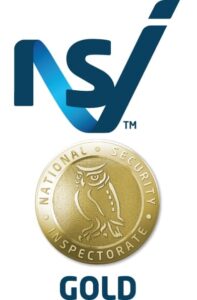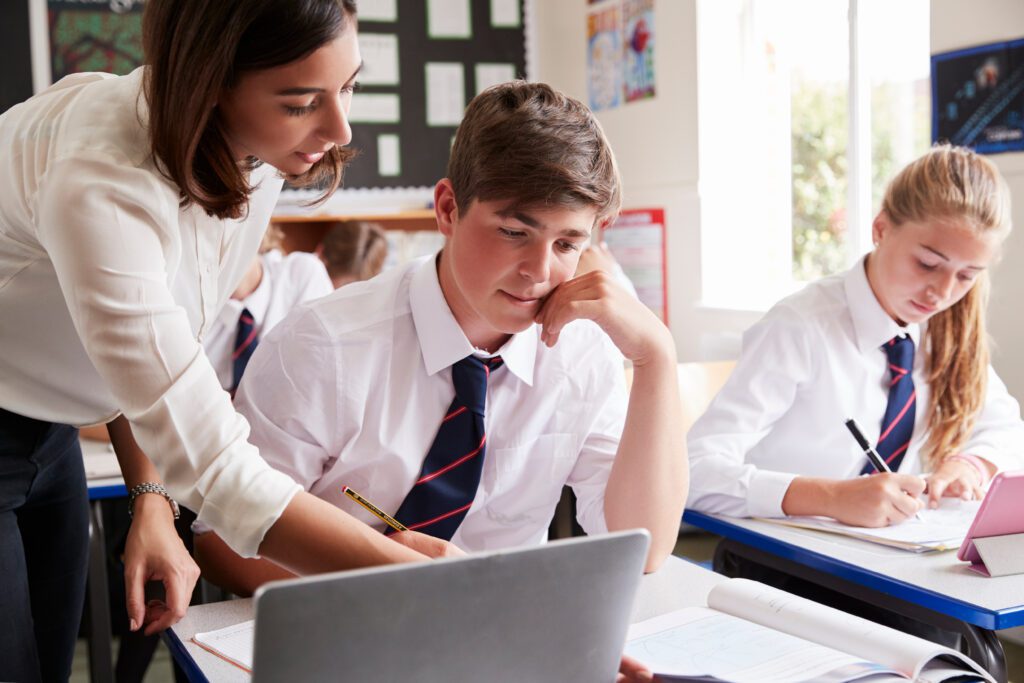There has been a large rise in the numbers of young people vaping over recent years which has had a huge impact on secondary schools, in particular. The schools are having to deal with a public health issue that has led to anti-social behaviour and disruption to learning among their students.
Worried about vaping within your school?
Contact us to discuss what you can do to reduce it.
In the UK the selling of vaping devices or e-cigarettes to anyone aged under 18, and buying vaping products for anyone under 18, are prohibited. The Labour government that came into power on 5th July has announced that it will ban disposable vapes, which were introduced into the market in 2021, from June 2025. The government said this would give shops time for shops to sell stocks of single-use vapes before the ban take effect.
The disposable vape ban aims to both protect the environment and make vaping less attractive to younger people. Most single use vapes are thrown into general waste bins or discarded as litter rather than recycled.
The October 2024 budget also introduced a Vaping Products Duty, a flat rate tax on vapes of £2.20 per 10ml of e-cigarette liquid that will be charged from 1 October 2026. This was welcomed by Hazel Cheeseman, chief executive of the public health charity Action on Smoking and Health (ASH). She said: “The vape tax aligns with recommendations we made to government regarding the importance of an excise tax and the necessity of it being a flat rate.
“An excise tax on vapes will reduce access to cheap products for children by both reducing affordability and creating more powers to tackle illegal imports. Border Force and HMRC have been central to the reductions in the illicit tobacco market and will be able now to play the same role on vapes.
Tobacco and Vapes Bill introduced
Separately the government has reintroduced the Tobacco and Vapes Bill which was lost when the previous Conservative Prime Minister Rishi Sunak called the General Election last May. This will bring in a progressive smoking ban to gradually end the sale of tobacco products across the country, introduce restrictions on vaping and on the spot fines of £200 to retailers found to be selling tobacco, vape and nicotine products to people underage. The new government had promised the bill would be reintroduced in the King’s Speech in July.
The bill introduced by the Labour government also includes some stronger measures than were in the original legislation proposed by the previous government. The government will, for example, be given powers to extend the indoor smoking ban to specific outdoor spaces – with children’s playgrounds and outside schools and hospitals all being considered. Additionally, as well as powers to restrict the flavours, display and packaging of all types of vapes, and other nicotine products that were previously proposed the Bill now includes:
- A ban on vape advertising and sponsorship;
- Further powers to regulate the design of vapes;
- Powers to create a retail licensing regime for the sale of tobacco and vapes;
- Powers to extend smokefree legislation to further outdoor areas;
- Powers to prohibit vaping in smokefree places
The extra powers proposed are all now subject to consultation and regulations would be introduced to enforce these rules.
Research from non-profit organisation, Material Focus, which aims to stop people throwing away or hoarding all their old small electricals, found that younger vapers were more likely to throw away their disposable vapes irresponsibly, admitting they did this to hide their habit from others. The study found that 31% of 16-18 year old vapers tended to throw away, drop or even flushed their vapes down the toilet because they did not want the people, they live with to know they vape – compared to 8% of the population.
The research also found that 3% of UK vapers said they drop single-use vapes on the ground compared to 8% of 16–18-year-olds and 33% of this age group that vape said they threw single-use devices away in the bin at their place of education or work. Talking with schools we are also aware of vapes being thrown into sanitary waste bins, leading to concerns about the fire hazard by those collecting this waste.
Concerns about vaping among young people
The latest figures from the NHS, covering a survey of secondary school pupils in England in years 7 to 11, released earlier this month showed that in 2023 vaping was at a similar level to 2021, at 9%. However, 25% of students admitted to trying vaping. Of those who have tried vaping, 89% have never regularly smoked tobacco cigarettes.
This reflects recent academic research showing that a rise in vaping was taking place among young people who were not regular smokers. The research carried out by the Department of Behavioural Science and Health, University College London, found 19% of 18-year-olds in April 2024 who vaped had never been regular smokers.
In 2023–24, an average of 55·6% of never-regular-smokers who vaped reported vaping daily and 81·7% had been vaping for six months or more. The study also showed that disposables were the most frequently used devices in 2023–24 and the most commonly used e-liquids contained 20 mg/ml or more nicotine. Meanwhile figures published earlier this year from ASH found the proportion of the population who vape had reached the highest rate ever this year at 11%, equal to 5.6 million adults in Great Britain.
This summer there was further concern raised about vaping when a team of researchers led by University of Bath Professor, Chris Pudney, carried out a test of confiscated vapes from schools across England, and discovered spice in 28 out of 38 (74%) schools. This meant that of the 596 vapes confiscated 1 in 6 (16.6%) contained spice. The tests using the world’s first portable device that instantly detects synthetic drugs developed by his inter-disciplinary team at the University of Bath.
Spice can cause a wide range of dangerous side effects, including cardiac arrest, and is a high cause of death within prisons. It is also an addictive drug. Alerts about vapes containing spice were issued at the start of 2024 after five young people in Greenwich were hospitalised in January.
Professor Pudney said that now vaping is so common among young people he believes there are some teenagers that want to experiment with cannabis. However, when they think they are being sold a THC vape they are actually buying one laced with spice. THC is very expensive, while spice is cheap. Both are illegal in the UK however, THC vapes are legal in the USA.
Problems schools face when vaping occurs
A survey of 4000 teachers in the UK conducted for the teachers’ union, the NASUWT, which was published in October 2023 found 85% of teachers believe vaping is a problem on school premises. Over half (54%) of teachers reported that some pupils repeatedly leave lessons in order to vape, while a third (35%) report that some pupils are struggling to concentrate in lessons due to the effects of nicotine.
75% of teachers stated that vaping has increased in schools over the past year—on average, they said the problem has grown by 25%—but only 20% believed that their schools had effective policies to deal with vaping. While most respondents were teachers in secondary schools, some primary teachers reported pupils as young as ten bringing vapes into school.
The new risk of spice vapes has caused added concerns. Ben Davis, Headteacher at St Ambrose Barlow RC High School in Salford, one of the schools that had its confiscated vapes tested in July by the University of Bath team, said: “We’ve had specific instances of young people under the influence of spice. I recall one young man describing how his hands felt like cartoon hands. He couldn’t control them and they felt like they didn’t belong to him. We’ve also witnessed two children collapsing.”
He added: “My message to families is, don’t assume your child is not involved. There’s a high chance they are, or they know someone who is. Please talk to them about it. Be open, non-judgmental, and accepting. As soon as you judge or blame, barriers will go up, and you won’t reach your child. This conversation is crucial for their safety.”
Following an interview with Professor Pudney BBC Radio 4’s Today was contacted by a college principal in London. He said the college had noticed an increase in the level of intoxication of a small number of students which was different from that experienced previously when they had drunk alcohol or smoked cannabis. In one case an ambulance had been called for a student who had no idea what he had vaped and who subsequently was unable to return to the college.
Schools generally find that students vape in the toilets and it can become an increasing challenge to manage this and to track down those responsible successfully. When a number of children gather to vape, schools have found that this can lead to bad behaviour and toilets can get damaged. Students can also cause problems if they choose to hide the vapes when teachers try and track them down. Separately, other students can become intimidated and unwilling to use the toilets because of those vaping. This was the experience of both St Joseph’s College in Stoke-on-Trent, as well as Baxter College in Kidderminster.
While vaping is accepted to be safer than smoking and is recommended as a tool to quit the habit all health professionals are clear. If you have not smoked, don’t vape and vaping is unsuitable for young people.
This July a 17-year-old from Egremont in West Cumbria, appeared on ITV’s Good Morning Britain, warning about the dangers of vaping for young people. Kyla Bright required five and a half hours of surgery after suffering from a collapsed lung. She had previously consumed a 4000 puff vape in a week, according to ITV.
Last year a 12-year-old from Belfast who was hospitalised also warned against the dangers of becoming addicted to vaping. Sarah Griffin, an asthma sufferer, spent 4 days in a medically-induced coma in September when her lung collapsed.
Responding to the rise in vaping within schools
In September 2022, the public health charity, Action on Smoking and Health (ASH), published guidance for schools to help them manage the vaping problem. This was available alongside more extensive ASH youth vaping resources for local authorities, schools and parents.
The guidance for schools was developed with advice from teachers with expertise in safeguarding and health education, and is designed to support the development and implementation of evidence-based school policies. It was particularly aimed at designated safeguarding leads and PSHE teachers within secondary schools.
Although the guidance produced by ASH, advises against suspension for vaping, unless it is accompanied by poor behaviour, the policies of some schools now suggest vaping itself can be a justification for exclusion. As we reported earlier this year a number of schools have amended their behaviour policies, and written to parents to indicate that if their pupils are caught vaping or they are in a group that are vaping then they will be suspended.
The illicit vapes challenge
Research conducted by the Chartered Trading Standards Institute (CTSI) found that illegal vapes are the products Trading Standards professionals are most concerned about on the UK’s high streets. This is not just about vapes containing illegal substances like spice and THC, but also about the level of nicotine they contain and harmful levels of other materials. A CTSI statement on vaping said Trading Standards saw a rise in illicit sales of vaping products by specialist vape shops, convenience stores and corner shops during 2022 with more than 1.4 tonnes of illegal vapes seized in the last six months of that year in the North East of England alone.
Vapes and e-cigarettes are regulated by the Medicines and Healthcare products Regulatory Agency. The regulations require that they have tanks to a capacity of no more than 2ml; a nicotine strength of no more than 20mg/ml; and their labels display manufacturer details and health warnings. Refill containers are restricted to a maximum capacity of 10ml, certain ingredients including colourings, caffeine and taurine are banned, and nicotine-containing products or their packaging must be child-resistant and tamper-evident.
However, many of the devices seized by Trading Standards teams breach these rules. A separate investigation by the BBC in 2023, which commissioned laboratories to analyse confiscated vapes from Ecl-ips customer, Baxter College, found most of them had high levels of lead, nickel and chromium. The levels were above the legal minimum and would be harmful to young people.
All these are issues that the government aims to be addressed in the Tobacco and Vapes Bill.
Helping to solve the problem of vaping in schools
While schools and colleges will be hoping the ban on disposable vapes and further restrictions proposed in the forthcoming Tobacco and Vapes Bill will help to curb underage vaping in the future, they need to understand the scale of the problem they have and take steps to address it now.
Customers of Ecl-ips, such as Baxter College and St Joseph’s College, have shown that having robust policies and trained staff are important. Having a tool to provide more data and support staff can also make a huge difference.
This is how the HALO Smart Sensor can help. Charlotte Slattery, Deputy Headteacher at St Joseph’s College, admitted that, ““I had dithered about it for over 12 months due to the cost but it has been transformational for us.”
She added, ““Being able to identify students who are vaping has also allowed us to have much more meaningful conversations with our young people about the dangers of vaping and garner support from parents. This is helping us to have open dialogue with students that we hope will become more of a proactive message, in time, rather than a reactive one.”
Matthew Carpenter, Principle at Baxter College said, “It has transformed the amount of antisocial behaviour in toilets, children are more confident in going to the toilets. It has also reduced the number of students asking to go to the toilet during lessons”.
Getting vape detection in schools right
There are a number of devices that are being marketed as vape detectors but we advise schools to look at the product descriptions carefully. Schools need to consider what is actually being monitored; cybersecurity and your IT networks; the pricing, as some vape detectors require a subscription; and be certain the devices will withstand the school environment.
The HALO Smart Sensor uses a dynamic vape detection algorithm to automatically learn the environment and alert when vaping is detected. The HALO is also the only product that can alert and differentiate between vaping, vaping with THC, and intentionally masking vaping behaviour, by using aerosols to cover up vaping. Unlike many other vape detectors, the HALO is a standalone device so once you have bought and installed it you are not obliged to have any ongoing costs.
If students become suspicious of a new sensor within a toilet block there is a potential that they will become a target for the students to tamper with or they may try and remove the vape detector. The HALO will detect if it is being interfered with and a notification will be sent seconds after the detection. Additionally, students should not be able to damage the device significantly because it has an IK 10 rating, making it vandal resistant. As the HALO is a POE device it is directly connected into your network and the same cabling is used to provide power, which makes it more robust and means schools are not reliant on a Wi-Fi connection.
The HALO has the ability to detect abnormal noise levels, which could also suggest aggression between students. When an incident occurs like this it is important that school leaders get notifications quickly. When the smart sensor is installed, it will literally learn what the normal sound levels are within its environments and then will send alerts when a threshold above normal is detected for a specified length of time. Ecl-ips can support you to ensure that your thresholds for this are correct and false alerts are stopped.
The HALO can be pre-staged before it is delivered so it will be ready to send email alerts to the appropriate staff more quickly. Once the device is plugged in it will take 24 hours for the sensors to self-calibrate.
Tackling vaping in schools
There is no doubt there is a huge problem in youth vaping which has adversely impacted schools. While changes in the law are planned that will help to address the wider issue schools need to respond now to support their students. A vape detector, along with a robust approach to dealing with perpetrators and education of young people, can help. Contact us to find out more.
Useful Links
Ecl-ips Articles
Tobacco and Vapes Bill returns to Parliament
The government to ban the sale of disposable vapes
Large numbers of vapers who were never regular smokers
More vaping could cause vape detection need
Summer warning: illegal vapes are everywhere
Upcoming academic year brings heightened vape concerns
King’s Speech reintroduces Martyn’s Law
Concerns about contaminated vapes
Helping schools take a zero-tolerance approach to vaping
Teenager warns about the dangers of vaping
St Joseph’s convinced of the value of vape detection
12-year-old girl warns other children against vaping
Figures show increasing numbers of young people vaping
Vape Detection in schools: Ensure you get an accurate sensor
Government responds to calls to curb young people vaping
Further Resources
Smoking, Drinking and Drug Use among Young People in England, 2023
Use of vapes (e-cigarettes) among adults in Great Britain



